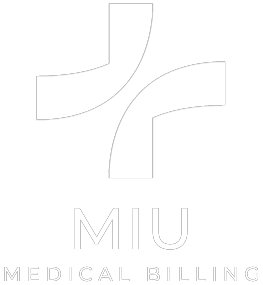Introduction:
RCM is a critical function used to identify an organization’s revenue sources, particularly within the healthcare industry. This is especially true in behavioral health, where the best RCM practices determine a practice’s capacity to attend to patients, control costs, and meet the challenges in behavioral healthcare billing. This blog details how to implement revenue cycle management for behavioral health, addressing 13 steps of revenue cycle management. This process focuses on optimizing operational effectiveness, increasing revenue acquisition, and operationalizing key processes.
1. Understanding Revenue Cycle Management
Revenue cycle management, therefore, encompasses the activities that capture, manage, and collect patient service revenues. Part of RCM of tremendous importance comprises patient appointments, invoicing, charging, deposits, and denials. In the context of the healthcare industry, better revenue cycle management is crucial to achieving maximum revenues, lesser denial rates, and better patient satisfaction.
2. The 13 Steps of Revenue Cycle Management

Step 1: Patient Pre-Registration
Pre-registration entails collecting information that the patient will provide at the facility before an appointment. Pre-registration should involve correctly identifying patients and their benefits to avoid billing complications at a later time. There are many advantages of using digital tools, such as pre-registration through online forms and integration of EHR into the system.
Step 2: Insurance Verification
Pre-registration entails collecting information that the patient will provide at the facility before an appointment. Pre-registration should involve correctly identifying patients and their benefits to avoid billing complications at a later time. There are many advantages of using digital tools, such as pre-registration through online forms and integration of EHR into the system.
Step 3: Patient Registration
Insurance verification determines the balance in the patient’s benefits and whether they must pay any coinsurance or a deductible, among other things. Some of the common issues include changes in insurance policies; the use of real-time verification makes these changes efficiently checked for accuracy.
Step 4: Charge Capture
In this step, providers collect specific demographic and insurance data to finalize the patient’s profile. Digital registration is preferred since it eliminates mistakes in data entry within the RCM process and enhances the quick processing of data.
Step 5: Coding
Charge capture is the recording of all services done to a patient; it involves procedures, tests, or consultations. This is of remarkable importance because capturing the total charge can lead to a loss of revenue. Such technology systems, like EHR systems, make it easy to ensure proper billing for all services offered.
Step 6: Claim Submission
The key to an optimized RCM is to submit claims appropriately and on time. Proposals and claims should be reviewed to ensure there is little to no chance of rejection. Examples of these recommended practices are using the proper billing software and compliance with the payer’s rules and regulations, which have been stated as underlying causes of denial of claims due to incomplete data.
Step 7: Payment Posting
Payment posting, therefore, refers to the booking of payments from patients and insurance companies. Payment posting and even timely posting of payments assist in detecting outstanding balances and appraising the practice’s financial performance. Ensuring that postings are done early in the day also helps staff notice issues like under-payments for which further clarification is needed.
Step 8: Accounts Receivable Management
Account receivable management can be described more precisely as an unpaid claims process and follow-up. When AR is adequately managed, the company can receive cash early, and the accounts receivable are not old. Follow-up on unpaid claims is critical to obtain maximum revenues, and some practices hire third-party revenue cycle management for better AR.
Step 9: Denial Management
With particular reference to rejected claims, denial management is used to manage the claims and reduce future denials. Some of the usual explanations for denied claims are incomplete information, wrong coding, and failure to obtain prior authorization. A system of review, appeal, and denial resolution of the issues strengthens revenue cycle management collection and avoids recurrence.
Step 10: Patient Billing
Patient billing is the act of informing patients about the payment expected from them. There is nothing as wrong as confusing the patient when it comes to billing since this will deny the waiter tips, and therefore, billing should be clear and transparent. It is recommended that any behavioral health facility accept as many modes of payment as possible and offer financial or monetary counseling to its patients.
Step 11: Collections
This means standard methods must be used to ensure efficient collection processes are followed throughout a revenue cycle. It is agreed that collection should be handled gently, particularly in behavioral health, where patients may have peculiar financial situations. A good mix of all is necessary in the revenue cycle management collections business, and outsourcing collections while still maintaining a solid working relationship with patients is a strong plus for these providers.
Step 12: Reporting and Analytics
Data analysis helps practices to monitor their financial position and facilitate the assessment of RCM processes. Each feature, from the length of stay in AR, denial rates, or collection efficiency, indicates the revenue performance. Reporting is helpful for the specific needs associated with enhancing the performance of the revenue cycle management process and reveals the potential problem areas.
Step 13: Revenue Cycle Management Process Improvement
Improving the solution is critical to maintain competitiveness in healthcare RCM. To check this, every step of the RCM process is reviewed, and major or minor updates are made to the steps from time to time to maintain efficiency. Lean and Six Sigma can be used to discover the issues with the implementation flow, optimize the corporation’s work, and raise its performance.
3. Outsourcing Revenue Cycle Management

Outsourcing RCM has advantages for many behavioral health practices, including better coverage, services, technology, and expenses. RCM outsourcing has benefits, including reducing operating burden and enhancing cash realization when considering an RCM outsourcing partner. Key areas that should be examined include Experience, technical proficiency, and precise reporting methods.
4. Strategies to Improve Revenue Cycle Management
Implementing Technology Solutions
RCM technology solutions, including EHR systems and automatic billing software, will provide efficient operating models. They include charge capture reporting and managing claims to stay competitive in healthcare RCM.
Training Staff for Efficiency
Regular assessments and updates to each RCM step ensure the process remains efficient. Process improvement tools help identify bottlenecks, optimize workflows, and enhance performance.
Regular Audits and Reviews
Periodic audits identify areas for improvement in RCM processes. Audits help detect errors, ensure compliance, and provide opportunities for financial performance enhancement.
Patient Engagement Strategies
Engaging patients in communication about billing and financial counseling can improve patient satisfaction and boost collections, resulting in revenues.
FAQs
1. When does revenue cycle management typically begin?
There are system solutions that are most effective in optimizing revenue cycle management, and they include the use of technology, staff training, and cycle auditing. Some technological approaches that apply to every phase of RCM include automated billing systems and electronic health records (EHRs). Other sub-tasks that boost efficiency include staff training in each of the sub-processes of the revenue cycle, such as coding and claims submission. Also, RCM outsourcing can bring subject-matter specialists and efficiency in terms of processes in such demanding areas as behavioral health RCM.
2. How can an organization improve its revenue cycle management?
Due to this, practices organizations should consider implementing strategies towards revenue cycle management; these include the importance of the audits performed regularly to prevent leakage from the revenue cycle management and check whether all claims are submitted and collection is made on time. Another key factor is patient engagement, or participation—remembering to pay a bill that cannot be itemized explicitly due to the complex structure of the business. Many believe that outsourcing revenue cycle management can bring more proficiency and experience, relieving employees to pay more attention to patients’ needs and improving revenues simultaneously.
3. How to improve revenue cycle management?
RCM follows and analyzes all patient revenue cycles, from pre-registration to claim sending, billing, and collecting. In behavioral health, RCM challenges as a feature of value-based care, it is essential to consider some areas: In the service line revenue cycle, ranging from coding of therapy services that may be unique to the specialty, every step should be well coordinated to avoid leakage. This can be taken a notch higher by outsourcing the revenue cycle management since it will be easier to work with experts overseeing these complex details to ensure that billing and collections are on track and correctly done.
4. How does revenue cycle management work?
The best strategies of RCM include a better approach towards patient pre-registration, a better way of insurance validation, a better way of charge collection, and coding. Implementation steps also include accounts receivable management, which is the process of recovering money on time and avoiding balances that take a long time to clear; denial management, the process of preventing or reducing the extent of lost revenue due to claim denial. Continually communicating revenue cycle management process changes and integrating revenue cycle management solutions for behavioral health subsequently improves revenue output.
5. What are the best revenue cycle management steps?
It operates through each step in the patient revenue cycle using a combination of pre-registration, claim collection, billing, and collections. In behavioral health RCM, certain areas of concern exist, such as coding of the therapy services to ensure each step in the process is handled to eliminate revenue drop. This can be taken even a step further when revenue cycle management is outsourced because this practice brings in specialized personnel who can ensure that billing and collections run smoothly and do not overlap because of these unique aspects of the patient population.
Conclusion
Managing the revenue cycle affects the overall financial positions of behavioral health practices. If an organization followed these 13 steps of revenue cycle management together with the option of outsourcing the revenue cycle management, it would mean increased efficiency in billing, improved revenue cycle management collections, and increased time spent on patient care. Understanding and improving your RCM workflows is the easiest way to ensure a more sustainable financial model in behavioral health.




